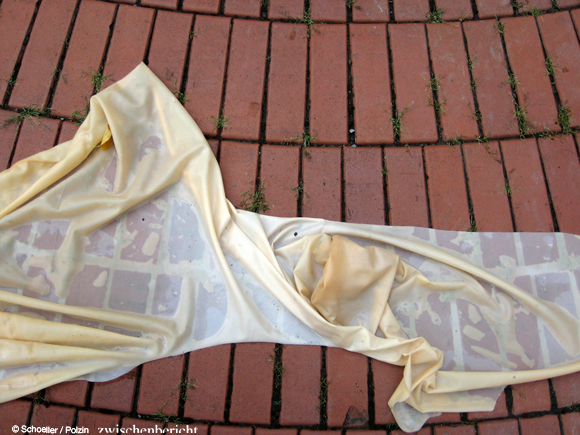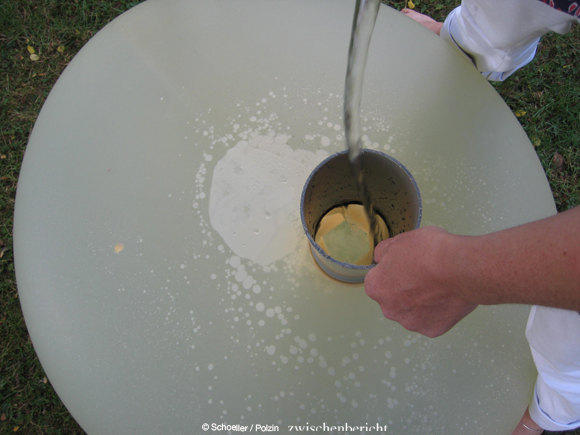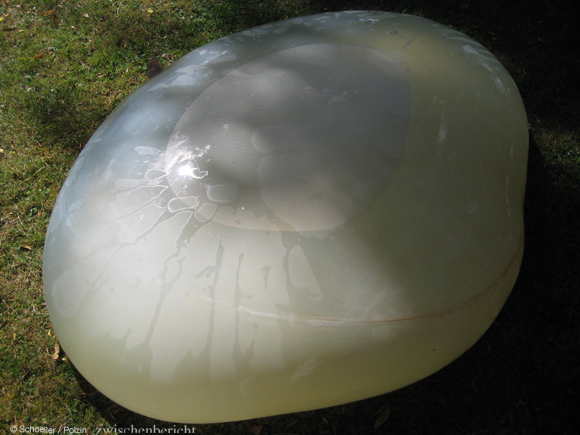|
|
D___ E

WasserMarsch FlowJob by URI
Amass Swell Burst
08.06. - 08.16. 2008 Kitzingen on the Main
FOTOS here:
(1) Market (2) Rose Garden (3) C-Museum (4) Barracks (5) Synagogue (6) Jewish Alley (7) Pappelalley
The river Main in Kitzingen determines generous urban space dimension. Huge masses of water flow pass the city every day. Main-water was transported from the banks of the Main to chosen places in Kitzingen with the help of interested citizens. The water was bailed out of the river bucket for bucket and was passed from hand to hand or transported to the city by a trailer for water. The water was amassed and filled in huge ballons ( diameter: 160 – 250 cm). The selection of the WasserMarsch- places in Kitzingen was made by zwischenbericht and is related to our encounters, experiences and researches in Kitzingen.
(1) Market place in Kitzingen, here is a very good daily market for food of all kinds.
(2) Rosengarten (“Rose Garden”), this park was built by Kitzingen citizens after a school building was destroyed in World War II. The school was used as a military hospital and was mistaken for a railway station, therefore it was bombed for stategic reasons. Instead of a reconstruction, a rose garden was built in memory of the dead.
(3) Fastnachtsmuseum (“Carnival Museum”), The place in front of the museum was mentioned most frequently by the Kitzingen citizens when we asked them: " Which place in Kitzingen do you relate mostly to a Kitzingen lifestyle?
(4) Former Larsen Barracks, Access to the huge urban ghost town lying waste since the US-troups left Kitzingen in 1990.
(5) Place in front of and behind the Old Synagogue, The Old Synagogue burnt out in the Reichsprogromnacht in 1938 and was rebuilt in 1993 and today it is an important cultural center in Kitzingen. The interior: jewish oratory and jewish archives and library.
(6) Judengasse (“Jewish’ Alley”), in 1942, seventy-five Kitzingen Jews and hundred-thirty-three Jews from the outskirts were driven together here. The Gestapo had the people arrested for three days in the hotel „Fränkischer Hof“ and deported them from Kitzingen via Nuremberg where the transport was enlarged to thousand people. The destination was the transit camp Izbica / Lublin (East Poland). Their trace is lost here, but it has to be supposed that not one of them has survived the Genozid.
(7) Pappelallee along the sea front, during the project a subject of dispute between citizen’s initiatives and administration who negotiate in fierce debates different points of view concerning the usage of the green space for the future development of the city.

In the context of Kunsträume Bayern, Flowjob of the URI August 2008, in Kitzingen
